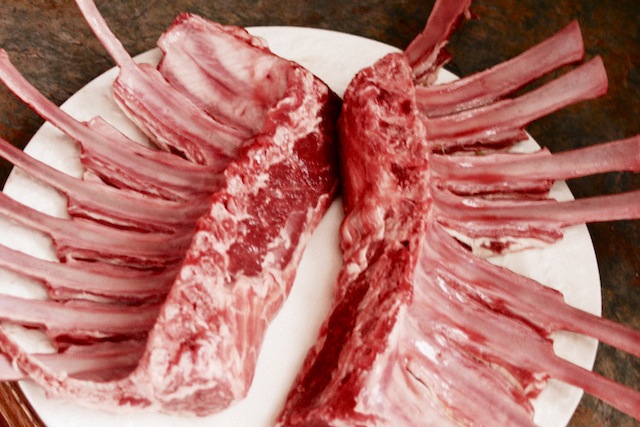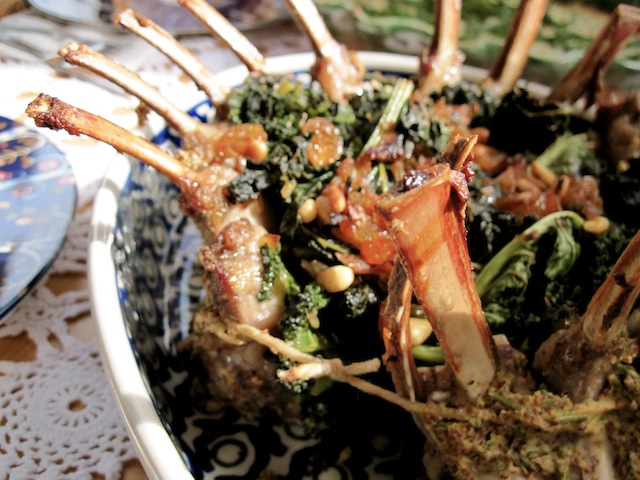
A scene from this year’s Easter fête: all of us, except mom, standing over two racks of lamb, discussing raw meat’s lack of visual appeal. Gross, disturbing, almost human-looking. An actual carcass. Mom was busy bleating in the background, “You killed my baby. I’m going to come get youuuuuu….” She refused to come any closer and did not participate in the subsequent lamb-eating, to be sure. But the rest of us were fascinated by the lamb. It was covered in filmy plasma from the fleshy strip of base up through the gangling, sawed-off ribs knocking against each other, and it gave off an earthy smell, like blood and dirt. Horrible, raw, food for Hannibal.
The cooked lamb was benign. Delicious to be sure, buttery soft and pink near the bone, tasting of rosemary and mustard on its crisp, fat-browned crust. Less like dead baby lamb and more like dinner. Perfect, delicious, dead, baby lamb.

What a contrast with the raw lamb, which made even a meat eater like me uncomfortable. The feel against my fingers of placental slime, the bones’ raw clack, the way it looked like the ribs ripped out from a child’s back.
There’s nothing dangerous in ground beef or pork cutlets, nothing to fear from a link of sausage or a sliver of cold honey-glazed ham. But a rack of lamb is visceral. The other day, in my yoga class, as we folded into half-pigeon, the instructor said, “You’re opening one of the largest joints in your body. You might feel a release of raw emotion. Just breathe into it.”
How ridiculous, I thought. A flow of emotion held captive in my hip? And then I made a rack of lamb and realized that some stretches take us places we’d rather not go and unless we breathe, we’ll never understand where we were. » Continue reading this post...